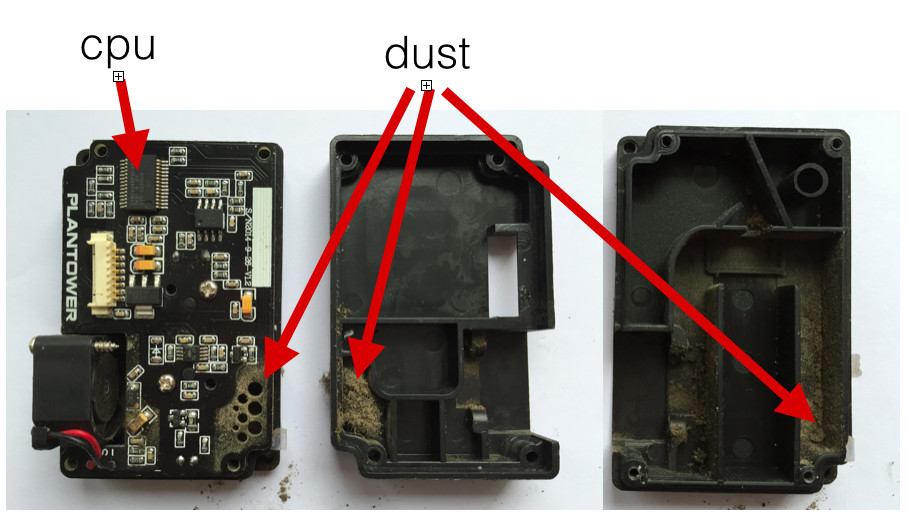Compartilhar: aqicn.org/sensor/pms1003/pt/
For a complete list of all the Air Quality Sensors test on aqicn.org, check our sensor overview page. 
The PMS 1003 Sensor
It is also sometimes refered as HK 5001, or labelled under the "oneair" brand, but it is indeed developped and produced by plantower (a Shenzhen based company with office in Beijing).
Especificações
- Measuring range: 0.3 to 1.0, 1.0 ~ 2.5, 2.5 to 10 microns (um)
- Range: 0 ~ 500 ug / m3
- counting accuracy of 50% @ 0.3um, 98% @ ≥0.5 um said the quasi-volume : 0.1 liters (L)
- Response time: ≤10 seconds (s)
- DC supply voltage: 5.0 volts (V)
- Maximum Operating Current: 120 milliamperes (mA)
- Standby current: ≤200 microamps (uA)
- Operating temperature range: -20 ~ + 50 degrees Celsius (℃)
- Operating humidity range: 0 ~ 99% RH
- MTBF: ≥ 5 years (Y)
- Maximum size: 65 × 42 × 23 mm
Olhe por dentro para o sensor

--
In terms of dust accumulation, the situation is actually not so bad since after 6 months running 24/7, the dust would only accumulated next to the air inlet, but not on the diode or laser.

Dados em tempo real
Current Dylos readings are:
- Particules larger than 2.5 is -,
- Particules llarger than 0.5 is -,
- updated on - - (China time).
Current PMS1003 readings:
- PM1 mg/m3: -,
- PM2.5 mg/m3: -,
- PM10 mg/m3: -,
- updated on - - (China time).
Time series graphs
PM2.5 Comparison with Dylos
PM10 Comparison with Dylos
--
For the list of all air quality sensors, check the Sensor Overview page
Read or publish comments (they rely on Disqus)
